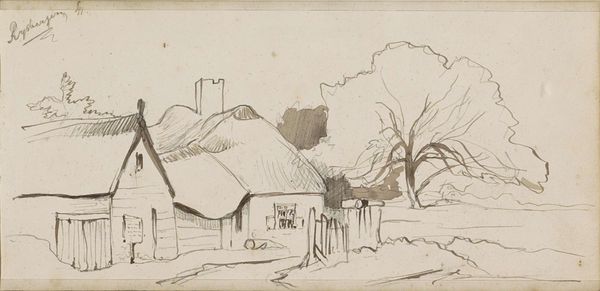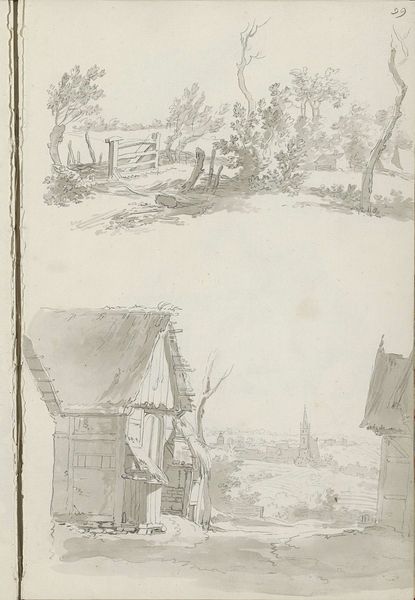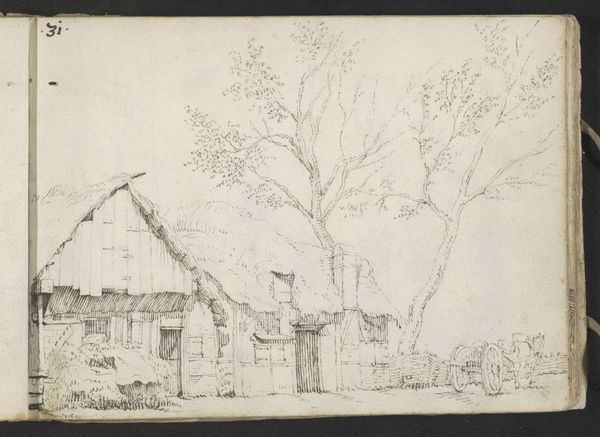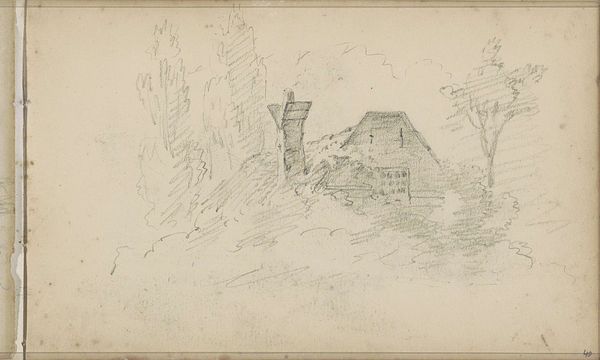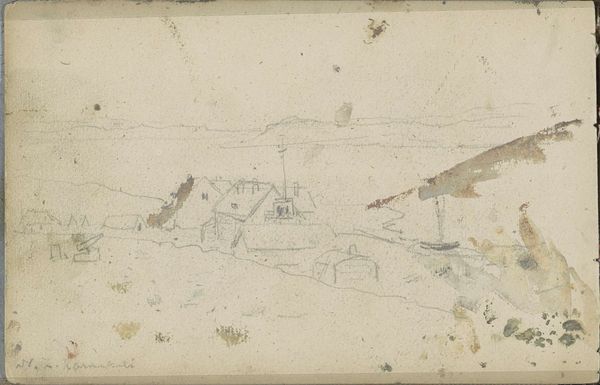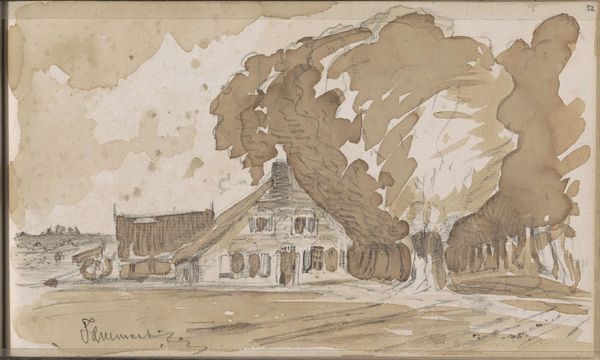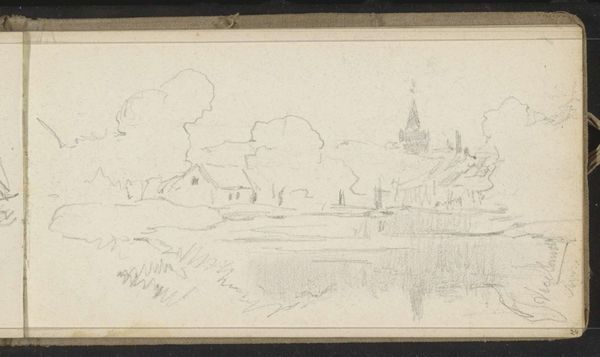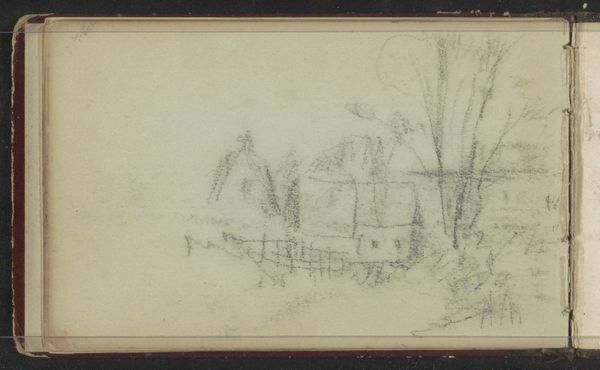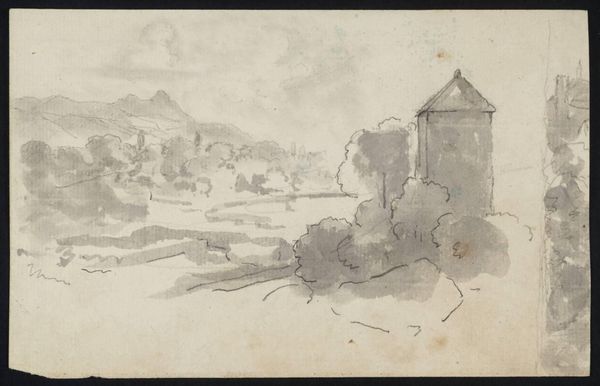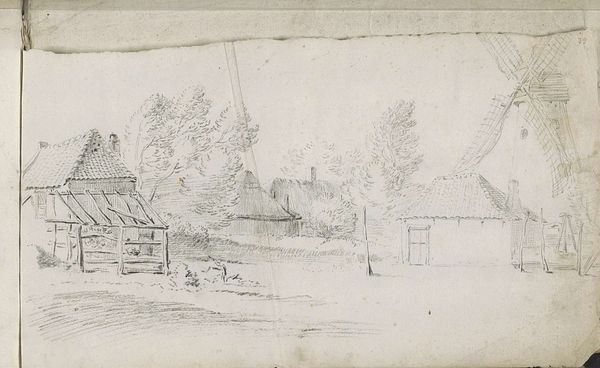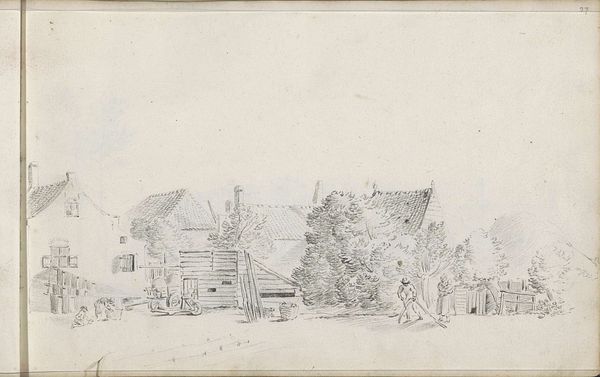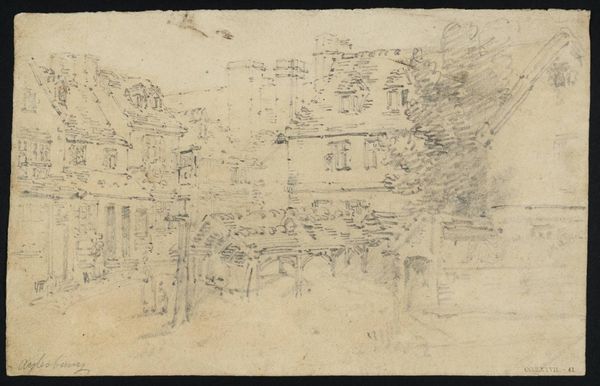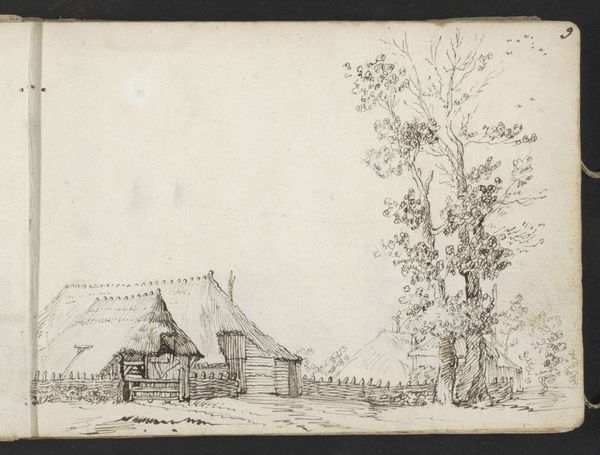
drawing, pencil
#
drawing
#
dutch-golden-age
#
landscape
#
pencil
#
realism
Copyright: Rijks Museum: Open Domain
Curator: "Huizen in Hillegersberg," a pencil drawing rendered by Johannes Tavenraat between 1864 and 1868, part of the Rijksmuseum collection, invites us to observe closely. What do you make of this scene initially? Editor: My first thought? A gentle haze. Everything feels softened, veiled. The houses almost melt into the surrounding foliage. There is a quiet quality to it. Curator: Absolutely, a serene moment captured. Note the artist’s technique – the light, delicate pencil strokes create a sense of atmosphere and depth, true to realism. Tavenraat also pays careful attention to the buildings' structures. Editor: Precisely! See how the angular rooftops intersect and the density of lines create shadow. Yet it never feels overworked. Even the barest indication of windows adds volumes of perspective, don't you think? There’s such careful consideration of compositional harmony, with structures anchored by a landscape view. Curator: Tavenraat's landscapes show his unique position straddling realism with subtle romanticism. Think about what it would have felt like to observe this village. Each line feels chosen, an honest record, devoid of the sentimentality that often creeps into art about idyllic places. Editor: Indeed, his skillful handling of pencil creates the sense of observing fleeting moments in life. How light plays on the rough surfaces of roofs and foliage, giving this deceptively simple sketch life that remains potent after all these years! It transcends simple documentation, speaking to the beauty within everyday scenery. Curator: I'll never look at pencil sketches the same way again, it offers such a unique snapshot, that captures the mundane as exceptional! Editor: To think of that power captured in such a simple moment... I find this genuinely charming and remarkably lasting!
Comments
No comments
Be the first to comment and join the conversation on the ultimate creative platform.
